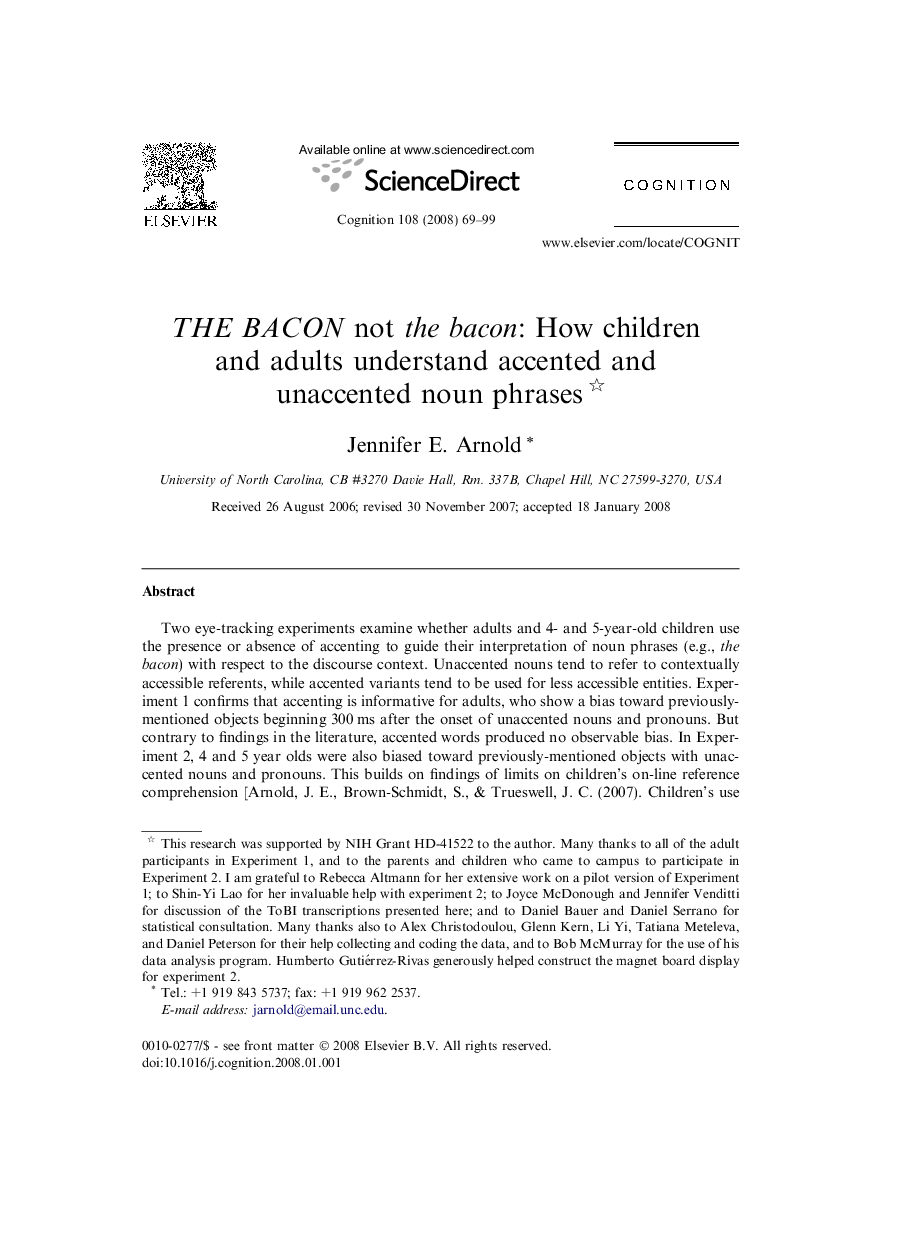| Article ID | Journal | Published Year | Pages | File Type |
|---|---|---|---|---|
| 926680 | Cognition | 2008 | 31 Pages |
Two eye-tracking experiments examine whether adults and 4- and 5-year-old children use the presence or absence of accenting to guide their interpretation of noun phrases (e.g., the bacon) with respect to the discourse context. Unaccented nouns tend to refer to contextually accessible referents, while accented variants tend to be used for less accessible entities. Experiment 1 confirms that accenting is informative for adults, who show a bias toward previously-mentioned objects beginning 300 ms after the onset of unaccented nouns and pronouns. But contrary to findings in the literature, accented words produced no observable bias. In Experiment 2, 4 and 5 year olds were also biased toward previously-mentioned objects with unaccented nouns and pronouns. This builds on findings of limits on children’s on-line reference comprehension [Arnold, J. E., Brown-Schmidt, S., & Trueswell, J. C. (2007). Children’s use of gender and order-of-mention during pronoun comprehension. Language and Cognitive Processes], showing that children’s interpretation of unaccented nouns and pronouns is constrained in contexts with one single highly accessible object.
